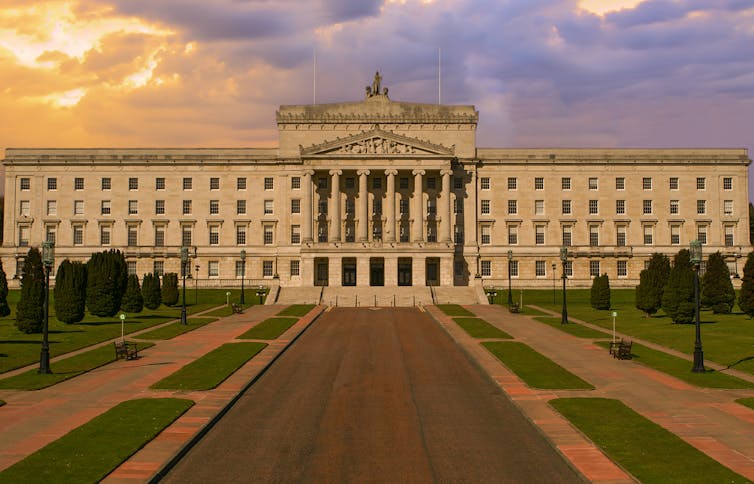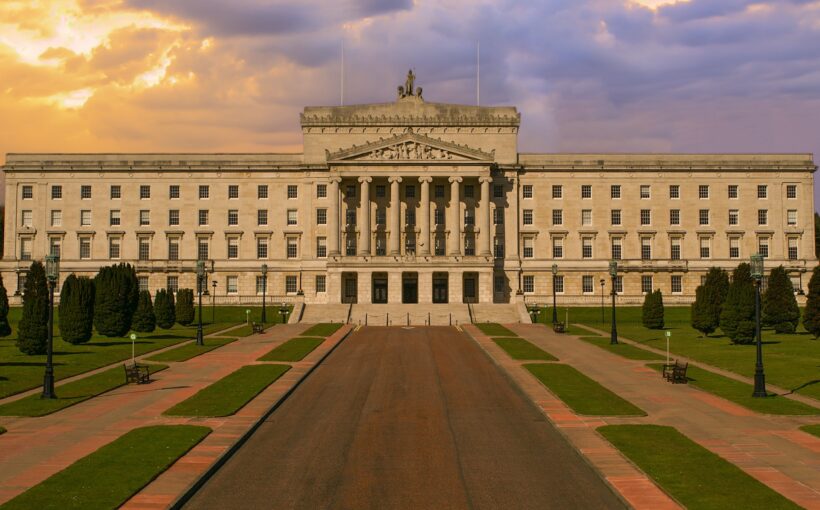The UK National Archives has produced educational resources for secondary schools to mark the 25th anniversary of the Good Friday Agreement.
Signed on April 10 1998, the agreement marked the end of the Troubles in Northern Ireland and the establishment of a new shared institution, the Northern Ireland assembly. It also established new formal political relationships between Ireland and the UK, and on the island of Ireland.
The school resources are detailed and provide important context. But some political nuance is overlooked – and the history of teaching on Irish history in British schools suggests there is a risk they may not be widely used. In Northern Ireland, meanwhile, their generally optimistic tone may limit their effectiveness.
The resources include a video, two sets of slides and associated guides and a student workbook. They provide teachers in secondary schools and colleges throughout the UK with materials for a school assembly and follow-up classroom work.
The assembly materials provide a brief history of Northern Ireland, before outlining the nature of the political violence that occurred during the Troubles, the journey towards peace, and the positive impact of the agreement over the past 25 years.
Core principles
The follow-up resources are designed to support discussion about the agreement and how it brought an end to the conflict. They cover the deal’s three core principles: respect, consent and identity – including the right of anyone in Northern Ireland to identify as British, Irish or both, and to hold citizenship and a passport for either or both countries.
The resources cover the three strands of political institutions established by the agreement and the actions that followed its implementation. Paramilitary organisations decommissioned their weapons and accepted the principle of consent – that the constitutional position of Northern Ireland will only change if a majority of people vote to support it. Members of these groups who had been imprisoned for crimes before the signing of the agreement were released from jail on a licence, which could be revoked if they rejoined a paramilitary group or supported paramilitary activities.
The security presence on the streets was rolled back and the number of British troops deployed in Northern Ireland was steadily reduced. A major reform of policing produced a new – and more representative – police service.
The materials explain how these measures aimed to move Northern Ireland in the direction of peace and stability. They were intended to reduce levels of violence, promote reconciliation and forgiveness, and move from relationships based on fear to ones based on trust. Students are encouraged to explore this further by designing a campaign to promote the lessons of the agreement for other areas of conflict around the world.
The resources from the National Archives are wide-ranging and helpfully set the Good Friday Agreement in context. Violent political conflicts rarely end in a moment, but after a long process.
Some political nuances are avoided. The conflict is cast as between communities, with the security forces implicitly presented as a neutral arbiter in the middle. However, responses to the Northern Ireland Troubles (Legacy and Reconciliation) bill currently working its way through parliament suggest a more complex reality.
The bill will limit investigations or inquests into Troubles-related deaths and is supported by those trying to protect military veterans from prosecution. It is opposed by all political parties in Northern Ireland as it will provide effective amnesty for many of those accused of killing people during the Troubles.
Reckoning with challenges
The resources also underplay some of the challenges the agreement has faced. The Northern Ireland assembly has been suspended due to political disputes for about 40% of its tenure. It is currently suspended, as the assembly has failed to elect a speaker or executive since the May 2022 election.

In part this comes from the mechanisms built into the assembly to promote consensus-building. Contentious issues not only require majority support in the assembly, but also a set level of support among the blocs of Members of the Legislative Assembly who designate either as unionist or nationalist. The aim was to promote cooperation, but it has more often led to decisions being blocked or vetoed. The architecture of the agreement was predicated on a more inclusive approach by elected politicians than has actually been achieved.
Studying the agreement could pose some interesting questions in schools in Britain. But the likelihood is that few schools in Britain will make use of these educational resources. Irish history has not previously been taught to any significant extent in British schools.
A similar gap in provision in Irish schools may also have produced a poor level of knowledge of the peace process in Northern Ireland.
In Northern Ireland especially, the generally optimistic and uncritical approach of the resources may make them less effective.
The achievement of 25 years ago should be celebrated. In Northern Ireland, we also need to engage frankly with the limitations of the agreement if the drive for a more peaceful and settled society is to be achieved. Northern Ireland has come very far in a relatively short time, but we’re not there yet.
![]()
Tony Gallagher has received funding from a range of organisations including the ESRC, the Department of Education in Northern Ireland, Atlantic Philanthropies, the International Fund for Ireland and Sixteen Consultancy (Belfast). He is a member of the Board of the Maze Long Kesh Development Corporation and the WAVE Trauma Centre.



